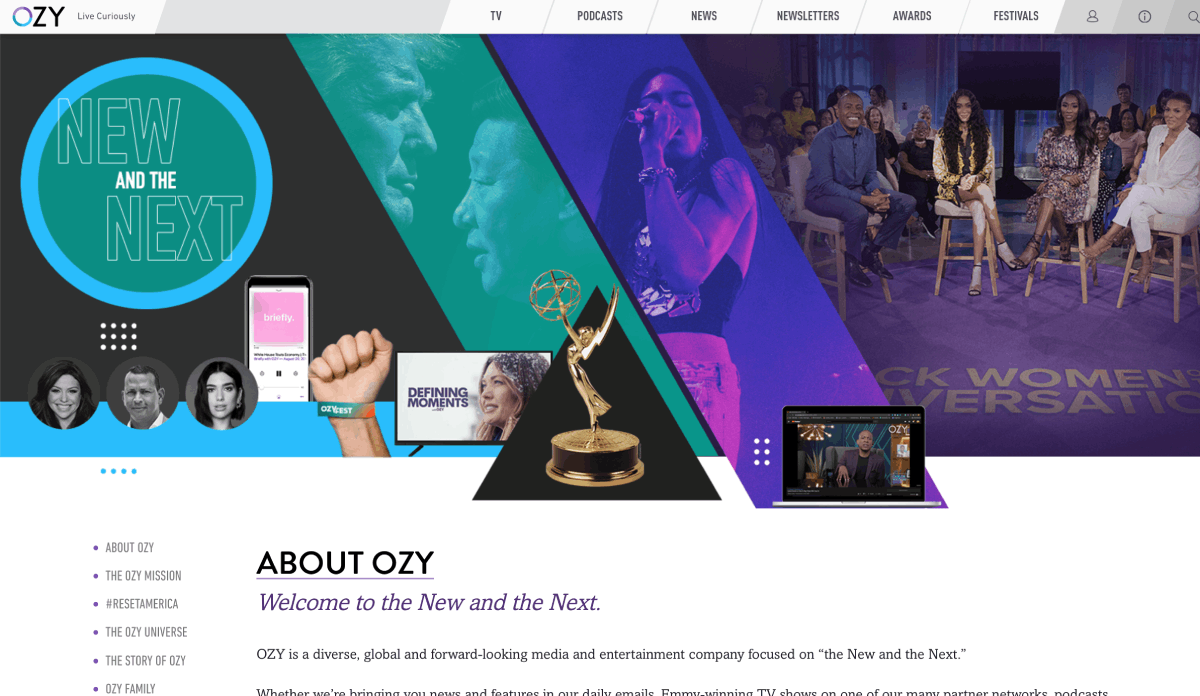Brand Safety Lessons in Ozy Media's Downfall
Posted by Brand Safety Institute • Oct 5, 2021 4:05:09 PM
The recent fall from grace of Ozy Media and its CEO, Carlos Watson, in the wake of a New York Times story has been so spectacular and so high-profile that it has gone beyond the business section and reached the front page of newspapers around the country. And to be sure, there are some particularly salacious accusations, including Watson’s partner, Samir Rao, impersonating a YouTube executive in a call with Goldman Sachs.
But beyond all the talk-show drama are some very clear lessons for advertisers, marketers, agencies, and publishers when it comes to brand safety.
For starters, the main takeaway for everyone in the digital advertising supply chain should be that brand safety is nothing less than an existential threat to your company. To say brand safety affects the bottom line is putting it mildly. In 2017, when Craig Silverman at BuzzFeed News raised questions in an article about Ozy Media’s use of paid traffic to boost numbers, brands including JPMorgan Chase, Amazon, and Visa were left wondering just what they’d gotten for their money when they’d sponsored content with Ozy.
But as the 75 full-time employees at Oxy Media found out on Friday, Oct. 1, when the company announced it was ceasing operations (though Watson told NBC’s Today Show the following Monday that he would attempt to resurrect Ozy), not adhering to brand-safety principles can mean the end of your company if it’s built on questionable practices.
"While brand safety has traditionally been a niche issue for industry insiders," said Mike Zaneis, co-founder of the Brand Safety Institute, "with the increasing frequency and severity of brand-safety gaffes, the topic is entering the mainstream. It is going directly from peoples’ living rooms to the corporate board room and becoming mission critical for businesses everywhere."
So what specific takeaways can other companies learn from Oxy Media’s downfall? For an Oct. 4 story on AdExchanger, Allison Schiff spoke with a handful of experts for their suggestions on what companies can do to protect themselves.
Marc Goldberg of Method Media Intelligence (and a member of the BSI's Board of Advisors) told Schiff the Ozy story, “continues to emphasize the gravity of verification for all media buys.” His solution was simple: “If you are a publisher, stop buying traffic sub penny per click. If you are a marketer, start asking questions about traffic acquisition.”
Kathleen Booth, CMO of clean.io, said that for marketers, “it's incumbent upon us to ask for the right data up front and then to evaluate the results we’re getting from our ad spend, not just by the number of views or clicks we get but by outcomes…that have a real impact on our businesses.
And Josh Schmiesing, CMO of Tubular Labs, took an industry-wide approach by saying, “The entire saga underlines the need for broad adoption of independently measured standards for audience reach and engagement that will help establish more trust and unlock the real potential of the marketplace.”
Oxy Media isn’t the only high-profile digital property out there using questionable practices. Silverman’s 2017 story detailed how Funny or Die, PCMag, and CNHI, owner of 90 newspapers around the U.S., were all using suspect sources of paid traffic, affecting clients that included KFC and Showtime.
There will be other cautionary tales like Ozy Media in the future. It's incumbent upon everyone in the advertising supply chain to be diligent in the fight against questionable practices. To that end, the Brand Safety Institute seeks to improve brand safety efforts by professionalizing the industry through certifications such as the Brand Safety Officer (BSO), as well as resources, checklists and tools for anyone at any stage of the supply chain. The Brand Safety Institute provides valuable information and insights to help you plan, execute, and analyze as you seek to align your advertising strategies with appropriate content.
Topics: Brand Safety, Transparency, Knowing Your Partners, Publishers, Marc Goldberg, Media Principles, best practices, editorial
Want To Stay Ahead In Brand Safety?
Sign up for the BSI Newsletter to get our latest blogs and insights delivered straight to your inbox once a month—so you never miss an update. And if you’re ready to deepen your expertise, check out our education programs and certifications to lead with confidence in today’s evolving digital landscape.

